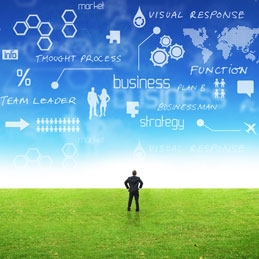From Idea to Product – the five stages of product development
|
Gilad Oppenheimer, CEO of Intovision, Engineering Development & Product Design
Stage I: Analysis and characterization The first stage when working towards a patent is to analyze and characterize the product and existing marketing conditions. This includes an examination of competing products on the market and a definition of the idea’s relative advantages and disadvantages, plus an examination of raw materials and technologies, a definition of target markets and users and their requirements, and a definition of the operating and production requirements for the product, applicable safety standards, human engineering, and the design of the final product. Stage II: Concept development The information collected in the first stage is the basis for developing a business concept for the idea. There may be several options for realizing the idea, differentiated by mechanical aspects, ergonomical approaches, selection of raw materials, design and esthetic considerations, user interfaces and so on. Therefore a number of concepts are developed, and the optimal one is selected for further development. For a product that includes a mechanical/ electromechanical element, it is necessary to develop an engineering concept that examines its technological feasibility, as well as the visual design concept that includes user interfaces and esthetic aspects. If there is no mechanical element, only the visual design concept is developed. Stage III: Detailed design Once the optimal concept has been chosen, a detailed version is developed, including detailed engineering design of the mechanism and detailed design of components, user interfaces, esthetics and ergonomics. Each of the components is planned according to the most suitable production technology, with detailed specifications of materials, sizes, standard components and so on.
The purpose of the prototype is to provide a realization that is as close as possible to the final product. It displays all the important aspects of the product – feel, appearance, ergonomics, action of the mechanism etc. A range of tests are carried out on the prototype and its various components to examine operational, functional and ergonomical aspects of the product. Once the preliminary prototype has been through all the tests, changes are made based on the outcomes of the tests, and the process repeated until the final prototype is achieved, from which the production file is derived. Stage V: Production The preparation for production stage includes building suitable tooling for the product, such as moulds, patterns, painting masks and so on, and defining the order of processes on the production line. For this purpose a production file is prepared, containing all the information and specifications required to make the product. The file includes: Final 3D models of the whole product and each part separately.Production drawings + instructions, such as finishes, tolerances, materials etc.Bill of Materials, listing all the parts of the products (for standard parts, catalog numbers are given).Order of assembly and sub-assemblies on the production line.The five milestones represent the axis that guides the entrepreneur. Each milestone is a separate stage in the product development process. Although it is described as a linear axis, it is important to remember that the process is a dynamic one and that there are several factors that affect it. Therefore it is important to retain flexibility and to be ready to update and change the development plan at each stage, according to requirements that emerge during the process. |
